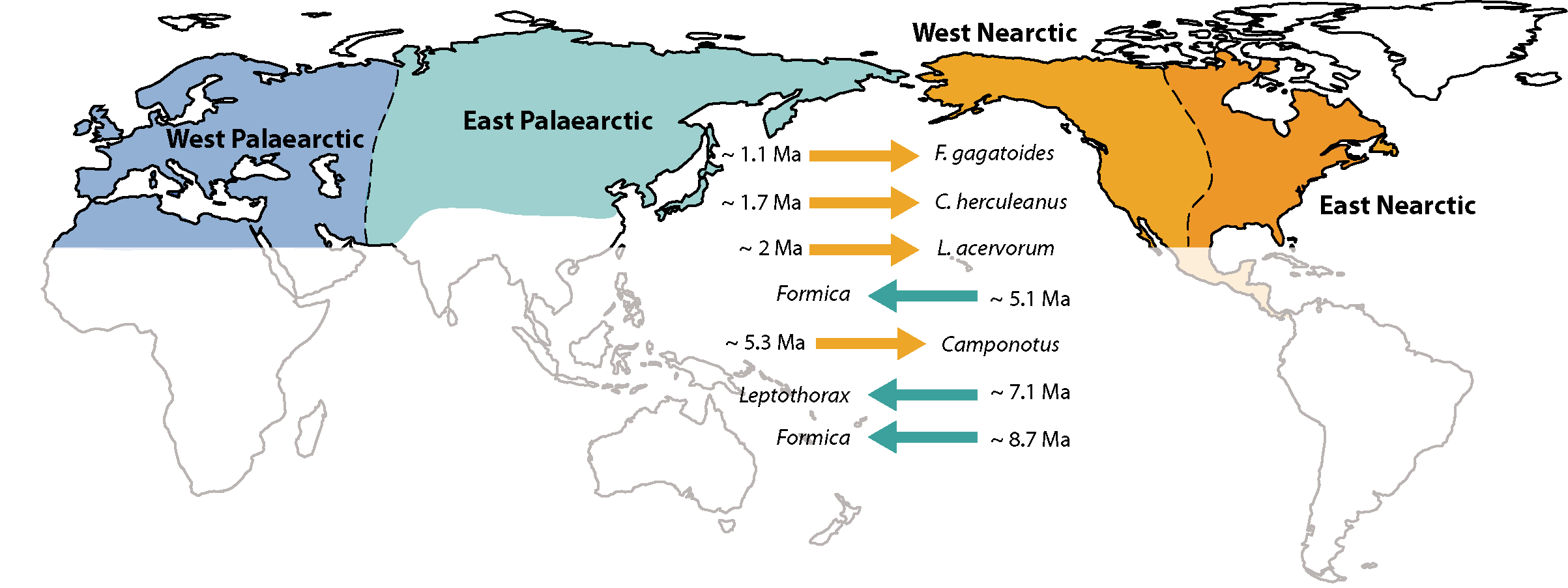Do Holarctic ant species exist? IBE researchers find the answer
Do Holarctic ant species exist? IBE researchers find the answer
Continents harbour unique faunas, and only a small percentage of species naturally inhabit more than a single continent. In the absence of gene flow, allopatric speciation can be expected over evolutionary time. Despite all this, 12 species of ants have traditionally been recognised as native to both North America and Eurasia, a region known as the Holarctic region.
 Researchers of the Butterfly Diversity and Evolution lab at IBE reconstructed the phylogenetic relationships and the biogeographical history of all putative Holarctic ant species. Results have been recently published in the Journal of Biogeography.
Researchers of the Butterfly Diversity and Evolution lab at IBE reconstructed the phylogenetic relationships and the biogeographical history of all putative Holarctic ant species. Results have been recently published in the Journal of Biogeography.
The scientists detected seven trans-continental dispersal events across the Bering Strait, although most of them were surprisingly old. Results show that only three species have a native Holarctic range; these three species are adapted to very cold temperatures and have crossed the strait in recent times. Against the current view, it was found that six of the studied ants represent different species in the Old and the New World, sometimes even including several previously unnoticed species.
Also, four recent introductions from Europe to North America were documented. The study reveals that cryptic biodiversity in North America is high and that ant taxonomy is far from complete.
REFERENCE ARTICLE: Schär, S.; Talavera, G.; Espadaler, X.; Rana, J.D.; Andersen Andersen, A.; P. Cover, S.; Vila, R. Do Holarctic ant species exist? Trans-Beringian dispersal and homoplasy in the Formicidae Journal of Biogeography. 2018;1-12 DOI: 10.1111/jbi.13380
